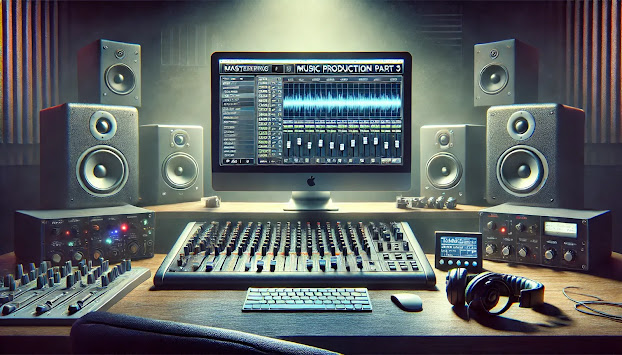Part 3: Mastering – Why You Should Outsource This Step
When it comes to mastering, my advice is simple: outsource this part to a professional mastering engineer. Mastering doesn’t dramatically change your sound, but it ensures that your mix goes out in the best possible shape. A professional mastering engineer has the equipment, the experience, and—most importantly—fresh ears for your project.
If you try to do the mastering yourself, you’re unlikely to hear any issues that may already exist in the mix. These problems are best fixed during the mixing process, not in mastering. A professional engineer can help you polish the final result, making sure that your mix translates well across different playback systems and meets industry standards.
Mastering isn’t about reinventing your sound. It’s about enhancing and optimizing what you’ve already done. If you’re serious about getting a professional-level result, it’s worth outsourcing this step.
DIY Mastering: A Quick Guide
If you still choose to do the mastering yourself, here’s a very basic guide to get you started:
Prepare Your Mix:
- Before mastering, make sure your mix has enough headroom (around -6dB of headroom is ideal) and that nothing is clipping.
Use a Limiter:
- Apply a limiter as the final plugin in your mastering chain. Set the ceiling to around -0.3dB to avoid clipping when converting to formats like MP3. Adjust the threshold to bring up the overall level of your track without squashing the dynamics too much. Aim for a loudness target of around -10 to -14 LUFS for streaming platforms.
EQ Adjustments:
- Use a gentle EQ to make final adjustments. You may want to apply a high-pass filter around 20-30Hz to remove any unnecessary low-end rumble. A slight boost or cut in the high or mid frequencies can also help fine-tune the balance.
Compression:
- Apply light multiband compression to control the dynamics across different frequency ranges. Keep this subtle—too much compression can kill the dynamics and make the track feel flat.
Stereo Imaging:
- Consider using a stereo imaging tool to widen the mix slightly, but be careful not to overdo it. Keep the low end (below 150Hz) centered, and only widen the higher frequencies to create space.
Final Check:
- After processing, compare your mastered track to a reference track—a song you think sounds great and is in the same genre. Make sure your track stands up in terms of loudness and clarity.
Remember, mastering is a delicate process, and doing it yourself can be risky if you’re too familiar with the mix. That’s why I still recommend outsourcing it if you’re serious about getting the best result.
Final Thoughts: Don’t Get Too Caught Up in LUFS
While mastering for streaming platforms, you might hear a lot about the -14 LUFS limit for loudness normalization. It’s important to keep in mind that this isn’t some magical number that you need to hit exactly. LUFS (Loudness Units Full Scale) measures the perceived loudness of your track, and platforms like Spotify or Apple Music normalize the playback volume based on this number.
However, the key thing to remember is to focus on sound quality, not just loudness. The -14 LUFS guideline is really a minimum level that your track should sit at for streaming. There’s no harm in going above -14 LUFS, especially in metal, where the music needs to hit hard. The streaming services will simply lower the volume if necessary.
Always aim for a well-balanced, punchy sound, rather than obsessing over a number. Loudness isn’t everything, and a well-mixed, dynamic track will always sound better, even if it’s a little louder than the -14 LUFS standard.
Refine the raw,
The Sonic Alchemist

Comments
Post a Comment